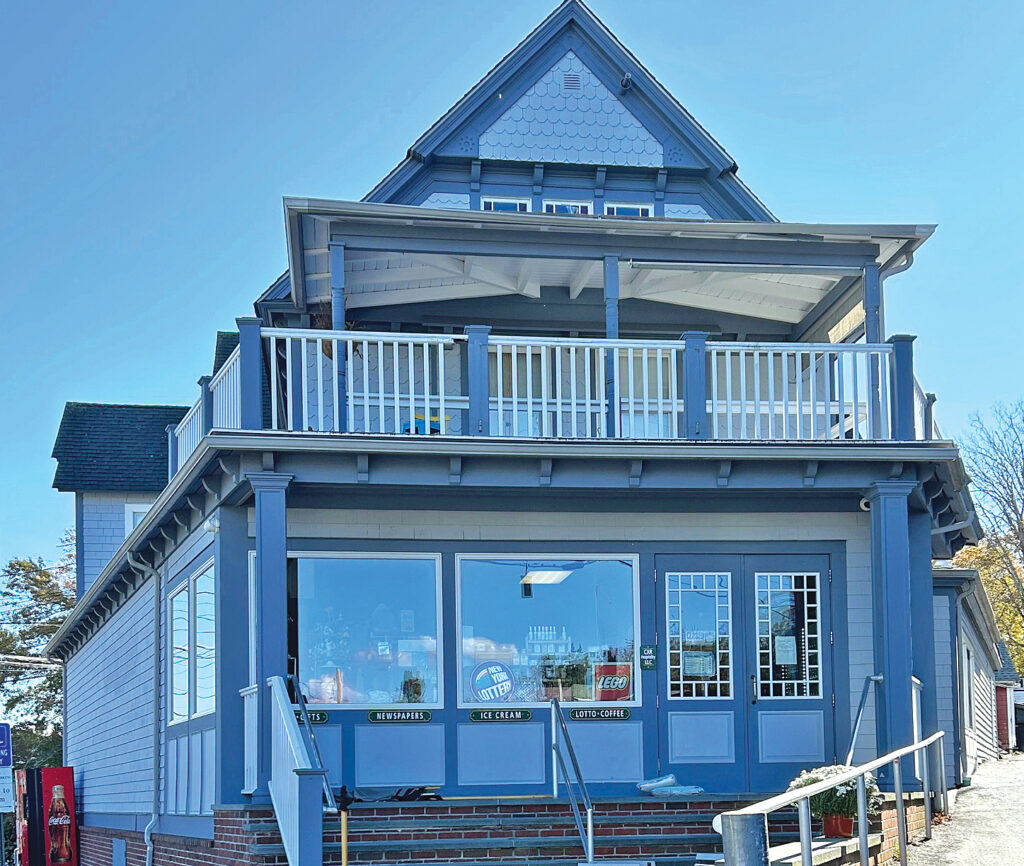Column: When a pharmacy closes

We aren’t the first to experience this, but being on a small island certainly makes the impact enormous.
A little over a year ago Shelter Island was facing the closing of this newspaper. The community rallied and the sympathetic owner heard our voices. The Reporter is still here. Unfortunately, this is not true with the owners of the Shelter Island Pharmacy.
They didn’t even care to have the conversation. Adding insult to injury, the long-cherished “Soda-Drugs” sign of the Shelter Island Pharmacy has been taken down. That sign, an emblem of the Island, greeted Islanders and visitors as they came up the hill from the ferry.
During the time of the potential newspaper shut-down I wrote a column discussing “news deserts.” Now, welcome to the phenomenon of pharmacy deserts.
According to an article from Ohio State University, pharmacy deserts are considered areas where residents lack reasonable access to a local pharmacy. Rural areas are particularly hard hit due to the lack of nearby healthcare facilities. Between 2010 and 2021 over 29% of pharmacies across the country closed. And obviously many more, including ours, have closed in the four years since this study.
The impact of pharmacy deserts causes real harm. Residents face barriers to obtaining critical and timely medications, vaccinations, and pharmacist-led care. Delays can worsen chronic conditions, increase hospitalizations, and result in poorer health outcomes in general. Rick Gates, chief pharmacy officer for Walgreen’s, recently wrote in Statnews (a health publication affiliated with the Boston Globe) that chronic care patients (who represent 90% of U.S. health care spending) often engage with their pharmacy 35 to 50 times per year and interact with their pharmacist 12 times more often than their primary care provider. He makes the case that pharmacists should be reimbursed for the care they provide and not just the pills they dispense.
There are many reasons for these closures, but the most important is a reduced reimbursement for prescription drugs. According to a recent Public Broadcasting report, most community pharmacies operate under a business model that relies on insurer reimbursements plus cash payments from patients. But insurer reimbursements are now administered by third party entities known as pharmacy benefit managers (PBMs).
A PBM is a company that negotiates and administers prescription drug benefits for health insurance plans. PBM reimbursement rates to pharmacies have been cut in recent years, drastically reducing independent pharmacy profits. While cutting reimbursement rates in some cases may reduce the cost to the consumer, they have forced pharmacies into very low margins or even losses.
PBMs are not regulated and are not required to reveal their formulas for determining cost. According to an article from the Pharmacist Society of New York, pharmacies are in a bind because they rely on the reimbursements from drug plans, despite the sometimes predatory tactics of the PBMs, who tend to favor chain drug stores over independents.
How have communities dealt with their pharmacy closings? What is the blueprint for now and the future?
One idea comes from Lindsey Angelotti and her husband Erik, who took ownership of Ella Community Pharmacy in rural Indiana in 2017. Since then, as pharmaceutical revenues declined, they were forced to seek a different business model. The store now includes packaging services, and they are also renting and selling medical equipment. In other words, come for the prescriptions and the pharmacist, but also come for things that you cannot buy on Amazon. Drug store shampoo and sun screen aren’t cutting it anymore when you can instead purchase them with just a click.
At the macro level, Arkansas recently passed a law banning the integration of PBMs and pharmacies, meaning that no owners of PBMs can also own a pharmacy. The law is controversial — CVS Health, a PBM that owns 9,000 retail pharmacies, is threatening to shut down its retail operations in the state. On the other hand, the National Community Pharmacist Association representing independent pharmacies said the law will help end anti-competitive cost reimbursements and will help independent pharmacies remain competitive and viable. While the results are still unknown, legislators in Indiana, New York, Texas, and Vermont have introduced similar bills.
In the meantime, in the absence of an in-person pharmacist, telepharmacy may be the wave of the future. According to the National Institutes of Health, telepharmacy pharmaceutical service provision includes medication review, patient counseling, and prescription verification by a qualified pharmacist operating remotely. Prescriptions are prepared at a central pharmacy and are delivered to either the patients’ homes or to an automated dispensing machine at a designated convenient location. I am oversimplifying the process here, but the point is that it has become a viable solution in some areas suffering from pharmacy deserts.
The benefit is easy access to care in rural communities where pharmacy deserts are ubiquitous. The challenge is that currently there is no comprehensive and uniform telepharmacy law. This is still evolving as a practice.
Given the ingenuity and community spirit of Shelter Islanders, several excellent short-term solutions came about quickly and are being implemented. As is obvious from my initial research, finding a comprehensive long-term solution may take time and even more resourcefulness. We saw at the community meeting on Oct. 5 how much collective knowledge and talent exists here. And unlike those people who came to our Island with promises and then left in a heartbeat, the rest of us are committed to remain here and ensure the health of our neighbors.
Columnist Nancy Green is a social worker and co-chair of the Shelter Island Health and Wellness Committee.









